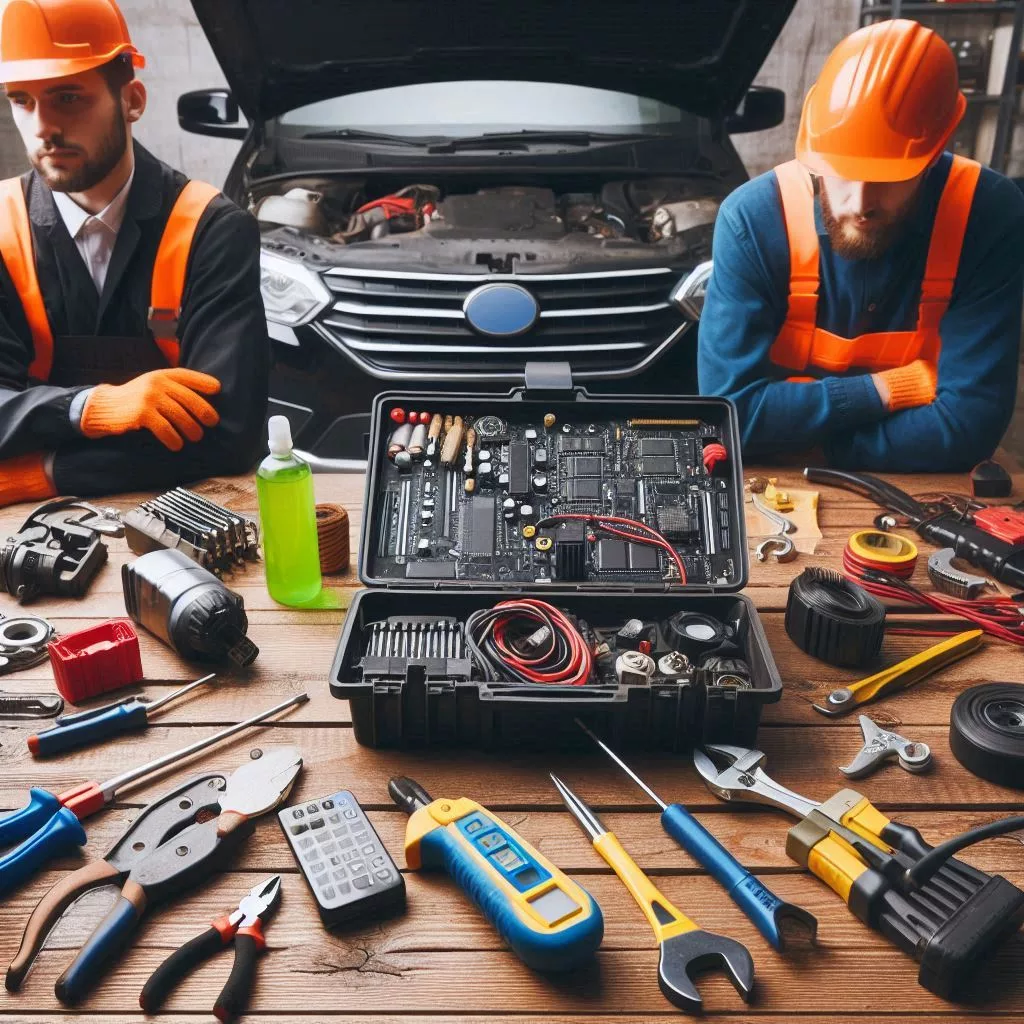Jumping into car diagnostics might feel intimidating initially, but the key is understanding the basics. Knowing your way around car diagnostics can help you save money, understand your vehicle better, and even avoid potential breakdowns. Plus, in today’s tech-driven world, it’s easier than ever to get started.
At its core, car diagnostics cover checking and interpreting error codes, monitoring various vehicle systems, and figuring out what’s causing those pesky dashboard warning lights. It’s about identifying issues before they turn into bigger problems. This hands-on approach not only aids in maintaining the car’s health but also empowers you as a car owner.
To embark on DIY car diagnostics, you’ll need some essential tools. These include an OBD-II (On-Board Diagnostics) scanner, a basic set of hand tools (like wrenches and screwdrivers), and possibly a multimeter for electrical checks. These tools are your new best friends in identifying and troubleshooting car issues.
There’s a stark difference between DIY diagnostics and having your car checked by professionals. Professional diagnostics usually involve more advanced equipment and in-depth knowledge. However, for common issues and basic troubleshooting, DIY diagnostics can be highly effective and satisfying. It all comes down to how comfortable you are fiddling with your car and how complex the problem is.
Many people think car diagnostics are exclusively for trained mechanics. That’s a misconception. With the right tools and some guidance, anyone can perform basic diagnostics. Resources like online forums, YouTube videos, and even car manuals can provide valuable insights and step-by-step guides.
Getting started with DIY car diagnostics gives you a better understanding of your vehicle and prepares you to tackle minor issues independently. It’s a valuable skill set that every car owner can benefit from, blending technology, mechanics, and a touch of detective work.
Essential Tools and Equipment for DIY Car Diagnostics

The foundation of effective car diagnostics lies in having the right tools. Investing in these essential gadgets will make your troubleshooting more accurate and straightforward.
One of the most critical tools in your arsenal is the OBD-II scanner. This device connects to your car’s computer system and reads diagnostic trouble codes (DTCs) stored in the car’s memory. Think of it as your translator—helping you understand the language your car speaks when something’s wrong. Many OBD-II scanners also offer real-time data monitoring, which can be exceedingly helpful in diagnosing issues on the spot.
Apart from the OBD-II scanner, a good multimeter is indispensable. This tool measures voltage, current, and resistance, helping you identify electrical issues. Whether checking the battery’s health or inspecting the alternator, a multimeter gives you precise readings.
You’ll also find tools like code readers useful. While they might appear similar to OBD-II scanners, code readers are often simpler and can quickly provide basic code information. These are ideal for those times when you need a fast read and don’t require detailed diagnostics.
Diagnostic apps are another great addition to your toolkit. Many OBD-II scanners now sync with smartphone apps, giving you a user-friendly interface to work from. Apps like Torque or Car Scanner ELM OBD2 offer extensive features, including code reading, data logging, and even performance tracking.
If you’re wondering where to find these tools, most auto parts stores carry them. Online retailers also offer a wide range of options. It’s essential to purchase from reputable sources to ensure quality and accuracy. Some tools come with essential features, while others are more advanced, so choose according to your needs and budget.
For beginners, there are plenty of cost-effective options. Basic OBD-II scanners and multimeters are relatively affordable and provide a solid starting point. As you gain experience, you might wish to invest in more advanced tools, but initially, it’s better to stick to the basics.
Step-by-Step Guide to Performing Common DIY Diagnostics

Getting hands-on with your car diagnostics can be incredibly rewarding. Here’s how you can tackle some common issues step-by-step, using the tools we discussed earlier.
First up, reading and interpreting OBD-II codes. Begin by plugging the OBD-II scanner into the diagnostic port, usually found under the dashboard. After establishing a connection, it will generate codes indicating specific issues. These codes usually follow a ‘P0XXX’ format, where ‘P’ stands for powertrain, and the remaining numbers correlate to particular problems. For instance, code ‘P0300’ might mean random misfires, requiring you to check spark plugs or fuel injectors.
Engine issues are often the most alarming. If you get a trouble code related to engine problems, don’t panic. Common culprits include spark plugs, ignition coils, and sensors. Spark plugs, in particular, are an easy fix. Simply locate the plugs, remove and inspect them, and replace them if they’re worn out.
Battery problems can also be diagnosed easily. Using a multimeter, you can check the voltage of your car battery. A healthy battery typically shows about 12.6 volts when the car is off. If the reading is significantly lower, you might need a new battery or an alternator check. Clean the battery terminals while you’re at it to ensure a good connection.
Brake issues not only affect performance but also safety. Inspecting brake pads and rotors is simple. Jack up the car, remove the wheel, and visually inspect the brake components. If the pads are worn thin or the rotors are grooved, it’s time to replace them. Also, ensure the brake fluid level is within the recommended range.
Electrical problems often start small but can escalate if ignored. Look for signs like flickering lights or slow power windows. Using a multimeter, check the fuses and wiring for continuity. If you find a broken circuit, replace the faulty wire or fuse.
Online resources and forums can be fantastic allies. Websites with user-generated content can offer real-world solutions to specific issues. Just ensure the information is from verified sources or long-standing members with positive feedback.
Safety Tips and Best Practices for DIY Car Diagnostics

Protective gear is essential. Always wear gloves to protect your hands from sharp components and chemicals. Safety glasses are a must to shield your eyes from debris and harmful fluids. Working with electrical systems? Insulated tools can protect you from accidental shocks.
Before diving into any work, make sure the car is parked on a flat, stable surface and the engine is off. Engage the parking brake to ensure the vehicle doesn’t move while you’re underneath it. If you’re lifting the car, use quality jack stands – never rely solely on a jack.
Mistakes happen, but some are avoidable with careful planning. Double-check the OBD-II codes, compare symptoms, and verify possible causes before replacing parts. This methodical approach saves both time and money.
Know your limits. DIY diagnostics is great for many issues, but there are situations where professional expertise is necessary. If you encounter complex problems like major engine failures or intricate electrical issues, don’t hesitate to seek help from a qualified mechanic.
Adopting a regular maintenance schedule can catch potential problems early. Simple tasks like checking fluid levels, inspecting belts and hoses, and running periodic diagnostics can keep your car in top shape and prevent bigger issues down the line.
Finally, never stop learning. Automobiles are complex machines, and there’s always more to understand. Online courses, video tutorials, and automotive books are valuable resources that can expand your knowledge and improve your diagnostic skills.

